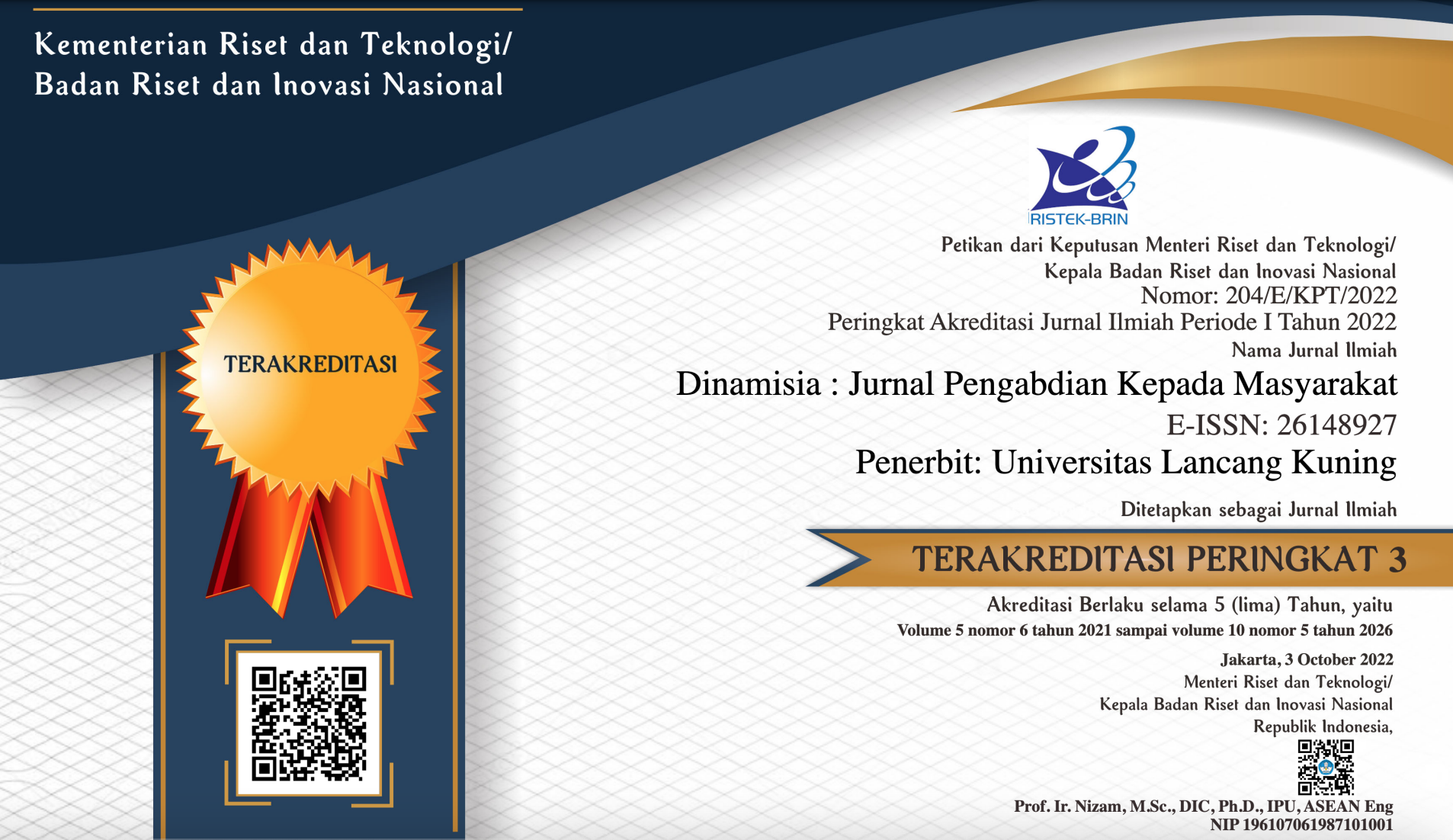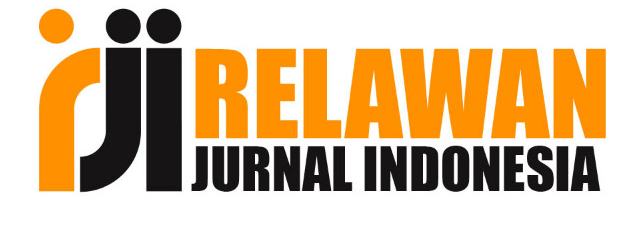Peningkatan Pemahaman Remaja Tentang Bakteri Ropionibacterium Acnes Bagi Kesehatan Kulit
Abstract
This dedication activity aims to increase the knowledge of adolescents about Propionibacterium acnes bacteria for skin health, especially acne, and form the awareness of adolescents to maintain and enhance the level of personal health. The specific target is for teenagers to be aware of how to maintain healthy skin, especially the face, remembering that adolescence is a period where their activities are very high, like activities outside the home, often forgetting to clean faces exposed to dust and dirt, as well as hormonal changes that affect the physiological of the body. This activity also provides knowledge about the bacteria Propionibacterium acnes, ranging from understanding, characteristics to the mechanism of action of bacteria. The methods and techniques of socialization consist of stages: planning, action, and reflection. 1) planning is carried out with the preparation and socialization of the program; 2) action, i.e. the implementation phase of the service, begins with exposure to the bacterium Propionibacterium acnes, the mechanism of action of the bacteria and its relation to skin health, then proceed with a question and answer session; 3) reflection, done by analyzing the participants' responses to the activities that have been carried out.
Downloads
References
Irianto, K. (2006). Mikrobiologi Menguak Dunia Mikroorganisme, Jilid I. Bandung: Yrama Widya.
Issacsson, VCS, et al. (2014). Dissatisfaction and Acnes Vulgaris in Male Adolescent and Associated Factors. Anais Brasileiros de Dermatologia. 2019:5 9 (4):576-79.
Heyman, W.R. (2006). Use of Indonesiann Medicinal Plants Products Against Acnes. Reviews in Agricultural Science, 1: 11-30.
Khan, Z. Z., Assi, M., & Moore. (2009). Recurrent Epidural Abcess Caused by Propionibacterium acnes. Khansas Journal of Medicine: 92-95.
Poli, F, et al. (2011). Acnes as Seen by Adolescent: Results of Questionnaire Study in 852 French Individualis. Acta Derm Venereol. 2011: 91: 531-36
Tjekyan, R. M. S. (2008). Kejadian dan Faktor Resiko Akne Vulgaris. Dalam: Media Medika Indonesia. Semarang: Balai Penerbit FK UNDIP dan IDI Wilayah Jawa Tengah; 43:37-43.
Umah, Khoiroh., Herdanti, Oriza. (2017). Masker Madu Berpengaruh pada Penyembuhan Acne vulgaris (Honey Mask Influence on Healing Acne Vulgaris). Jourals of Ners Community, Volume 08, Nomor 02, November 2017 Hal. 179-187.
Guay, D. R. P. (2007). Topical Clindamycin in The Management of Acne Vulgaris. Expert Opin. Pharmacother. 8(15): 2625-2664.
Sari, S. M., Ennimay., Rasyid, T. A. (2019). Pemanfaatan Tanaman Obat Keluarga (TOGA) Pada Masyarakat. DINAMISIA, Vol. 3, Special Issue Juni 2019, Hal. 1-7.
Sholih, M. G., Ahmad, M., dan Siti, S. (2015). Rasionalitas Penggunaan Antibiotik di Salah Satu Rumah Sakit Umum di Bandung Tahun 2010. Jurnal Farmasi Klinik Indonesia. 4(1): 63-70.



















